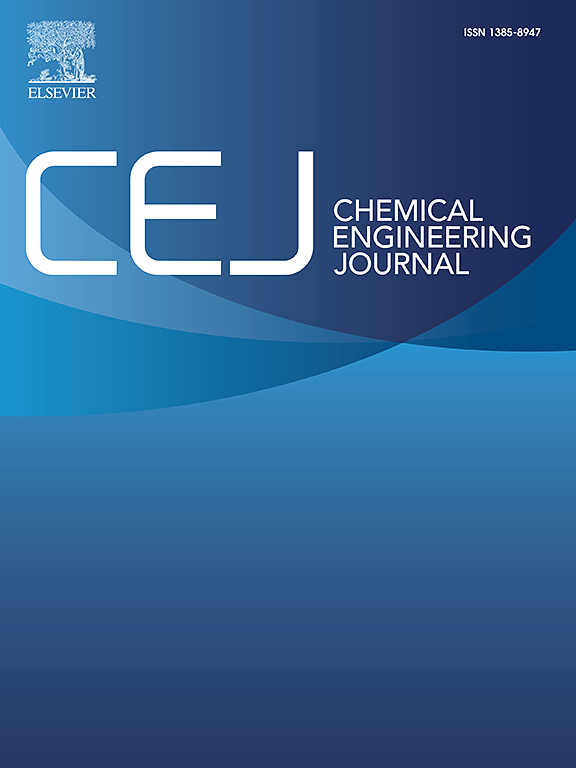Design and experimental study of solar-driven biomass gasification based on direct irradiation solar thermochemical reactor
IF 13.3
1区 工程技术
Q1 ENGINEERING, CHEMICAL
引用次数: 0
Abstract
Solar-driven biomass steam gasification is a promising technology to produce H2-rich syngas, meanwhile achieve flexible storage of renewable energy. However, the solar gasification application also faces numerous challenges, due to its involved complex chemical reaction characteristics and the inherent the multi-physics energy conversion processes. This work designs a novel direct irradiation solar gasification reactor, with the improved optical acceptance structure and reasonable test module, and the wheat straw particle is selected as experimental sample. Employing a 9 kWe high flux solar simulator, the maximum temperature of reaction bed in this prototype reactor reaches to 1260 °C, with the average solar flux of 1171.3 kW/m2. With adjustable radiation flux as experiment factor, under the highest total radiation of 3.35 kW, the molar fraction of H2 in the produced syngas is 47.1 % with the energy upgrade factor of 1.15, and the cellulose component completes decomposition. Increasing the mass flow rate of steam reduces the syngas output while raising the H2/CO ratio of the syngas. In addition, smaller biomass particle size facilitates the reaction, thereby improving the conversion efficiency of direct irradiation gasification. The investigation results provide a meaningful reference for the efficient utilization of abundant solar and biomass energy.求助全文
约1分钟内获得全文
求助全文
来源期刊

Chemical Engineering Journal
工程技术-工程:化工
CiteScore
21.70
自引率
9.30%
发文量
6781
审稿时长
2.4 months
期刊介绍:
The Chemical Engineering Journal is an international research journal that invites contributions of original and novel fundamental research. It aims to provide an international platform for presenting original fundamental research, interpretative reviews, and discussions on new developments in chemical engineering. The journal welcomes papers that describe novel theory and its practical application, as well as those that demonstrate the transfer of techniques from other disciplines. It also welcomes reports on carefully conducted experimental work that is soundly interpreted. The main focus of the journal is on original and rigorous research results that have broad significance. The Catalysis section within the Chemical Engineering Journal focuses specifically on Experimental and Theoretical studies in the fields of heterogeneous catalysis, molecular catalysis, and biocatalysis. These studies have industrial impact on various sectors such as chemicals, energy, materials, foods, healthcare, and environmental protection.
 求助内容:
求助内容: 应助结果提醒方式:
应助结果提醒方式:


